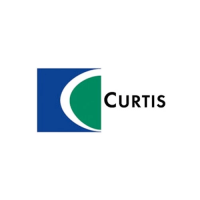Curtis 1232E/34E/36E/38E & 1232SE/34SE/36SE Manual, os 30
93
24 NOVEMBER 2015
6a — ACIM INDUCTION MOTOR CHARACTERIZATION
AUTOMATED ACIM MOTOR
CHARACTERIZATION PROCEDURE
Warning: Motor will rotate during this procedure.
This procedure is only for applications using an
ACIM motor and quadrature encoder.
e test procedure is performed in two parts. Both parts must be completed
for proper controller setup. e rst part applies to all systems, and the second
part is dierent for traction systems and hydraulic systems. It is assumed that
Initial Setup steps
1
through
bl
have been completed.
e procedure assumes the motor is approximately room temperature
(30°C); do not characterize a hot motor without a temperature sensor.
If characterizing a traction system, the vehicle should have its drive wheels
clearly o ground, and the vehicle should be safely blocked from accidental
movement. e drive wheels should be freely spinning—any dragging brake
or excessive friction may invalidate this test, or cause it to fail.
If characterizing a hydraulic system, the motor must be unbolted from
the hydraulic pump and allowed to spin freely. e test will not work properly
if the motor is left connected to the pump. Note: e motor may spin to high
speed in either direction.
Hint: e procedure is easier to conduct if you add the various motor character-
istics Program parameters and Monitor variables to your 1313’s Favorites folder.
PART 1: Traction and Hydraulic Systems
1. Verify that Motor Technology = 0-ACIM and Feedback Type = 1-encoder.
is conguration, and these settings, are required to run this procedure.
Motor » Control Algorithms » 0-ACIM
Motor » Feedback Options » Feedback Type » 1-Encoder
2. Enter the number of motor poles in the Motor Poles parameter. e vast
majority of induction motors will have 4 poles.
Motor » Control Algorithms » 0-ACIM » Characterization Tests » Motor Poles
3. Enter the desired Max Test Speed for the characterization test. Note this
speed might not be achieved, depending on system characteristics; this is
normal. A typical setting is approximately 1/3 of the maximum motor speed
in the application.
Motor » Control Algorithms » 0-ACIM » Characterization Tests » Max Test Speed
4. Enter the desired Max Test Current for the characterization test. A typical
setting is 70% (70% of the maximum motor or controller rating, whichever
is higher). Generally this is only reduced if motor heating during the test
is a problem, or resonance in the motor occurs at high currents.
Motor » Control Algorithms » 0-ACIM » Characterization Tests » Max Test Current.
5. Using the 1313, clear the Fault History (Faults Clear Fault History).
6a
+

